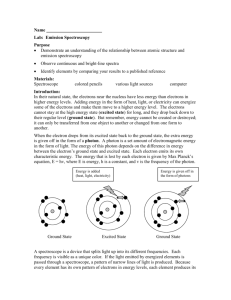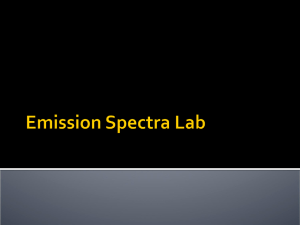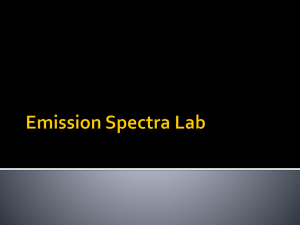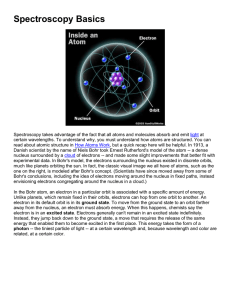File
advertisement
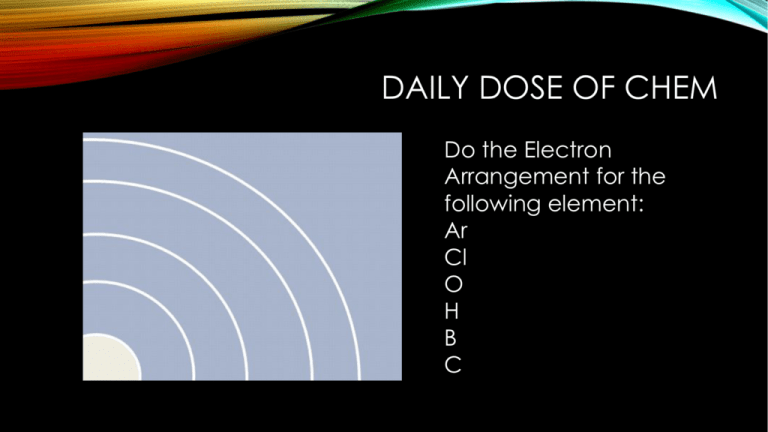
DAILY DOSE OF CHEM Do the Electron Arrangement for the following element: Ar Cl O H B C VISIBLE LIGHT Where Art and Science Diverge? ATOMIC “FINGERPRINTS” SPECTRA • http://www.metasynthesis.com/webbook/35_pt/pt_database.php?PT_id=136 Additive Color Specturm http://en.wikipedia.org/wiki/File:AdditiveColor.svg Subtractive Color Specturm http://en.wikipedia.org/wiki/File:SubtractiveColor.svg PHOTOGRAPHY White Balance ARTISTIC USE OF WHITE BALANCE? THEORIES OF COLOR VISION http://psych.ucalgary.ca/PACE/VA-Lab/colourperceptionweb/theories.htm • Trichromatic theory • Opponent Process theory • So…is my red your red? THEORY OF KNOWLEDGE: • Richard Feynman: “If all of scientific knowledge were to be destroyed and only one sentence passed on to the next generation, I believe it is that all things are made of atoms.” • Are the models and theories which scientists create accurate descriptions of the natural world, or are they primarily useful interpretations for prediction, explanation and control of the natural world? UNDERSTANDINGS: • Emission spectra are produced when photons are emitted from atoms as excited electrons return to a lower energy level. • The main energy level or shell is given an integer number, n, and can hold a maximum number of electrons, 2n2. • A more detailed model of the atom describes the division of the main energy level into s, p, d and f sub-levels of successively higher energies. • Sub-levels contain a fixed number of orbitals, regions of space where there is a high probability of finding an electron. • Each orbital has a defined energy state for a given electronic configuration and chemical environment and can hold two electrons of opposite spin. SO WHAT? Applications and skills: • Description of the relationship between color, wavelength, frequency and energy across the electromagnetic spectrum. • Distinction between a continuous spectrum and a line spectrum. • Utilization: • Absorption and emission spectra are widely used in astronomy to analyze light from stars. • Atomic absorption spectroscopy is a very sensitive means of determining the presence and concentration of metallic elements.

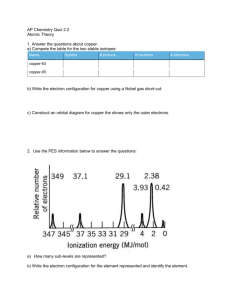

![Margit Haberreiter [], Laboratory for Atmospheric](http://s2.studylib.net/store/data/013086512_1-68e1f5c8efe978404d51647729788eb4-300x300.png)




